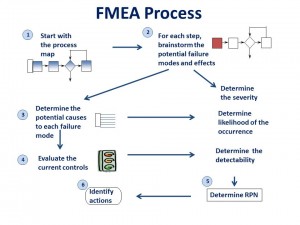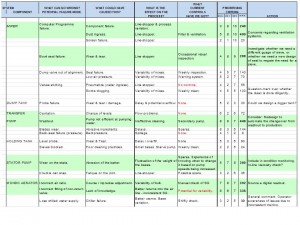Stopping things from going wrong : Failure Mode and Effects analysis
What is FMEA ?
- FMEA is a systematic method of identifying and preventing system, product, process and project problems before they occur.
- FMEA is focused on preventing problems, enhancing safety, and increasing customer satisfaction.
- Ideally, FMEA’s are conducted in the product design, project planning or process development stages, although conducting an FMEA on existing products or processes can also yield significant benefits.
Methodology
Failure Modes and Effects Analysis – FMEA – is essentially a technique for managing risk.
- It is a systematic approach in which a team examines all the potential failures in a product, process or project.
- The failures are evaluated according to how likely they are to occur and their consequences on the company or the customer.
- The critical few are highlighted and then action plans are put in place to either prevent them from happening, find them before they cause any serious damage or minimise their effects.
Training course content:
- Introduction – Purpose, Background & Benefits
- Steps in Design FMEA
- Project Planning
- Design Intent, Failure Modes, Effects on Customer
- Analysing causes of Failure
- Calculation of Risk Priority Number (RPN)
- Overview of Process FMEA
- Integrating POKA YOKE systems
- Implementing FMEA risk reduction
Who should attend?
- Those involved in the design or specification of products, processes or services
- Those involved in business improvement or process improvement management
- Managers wishing to understand the benefits of FMEA before company implementation
- Team members involved in a support role
What will I learn?
- Understand the purpose and benefits of FMEA
- How to implement FMEA
How will I benefit?
- FMEA is now widely used to evaluate and manage risk in both product and process design
- Through the recognition and evaluation of potential areas of failure, an organization can identify preventative actions and therefore minimise the risk of system failure
What does the FMEA do for us?
- Reduces the likelihood of Customer complaints.
- Reduces warranty costs.
- Reduces the possibility of safety failures.
- Reduces the likelihood of product liability claims.
Click on the summary below for a taster of the course content.


